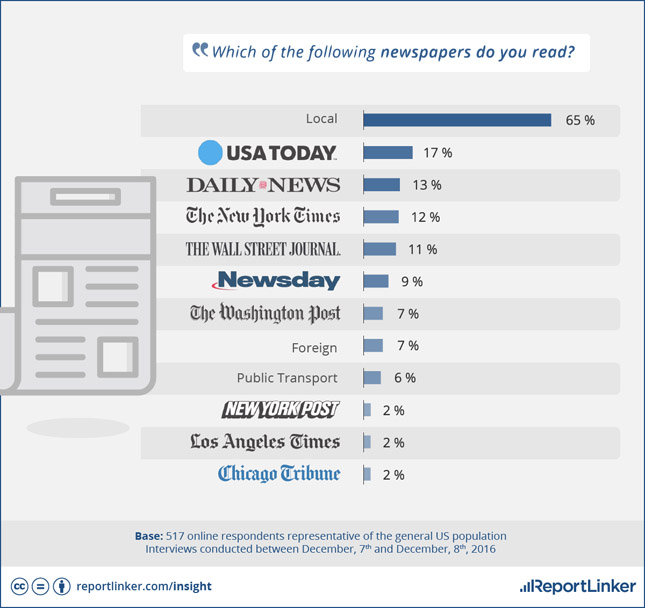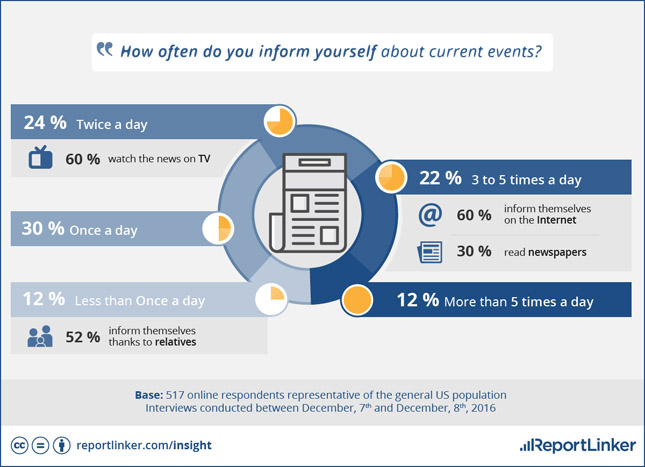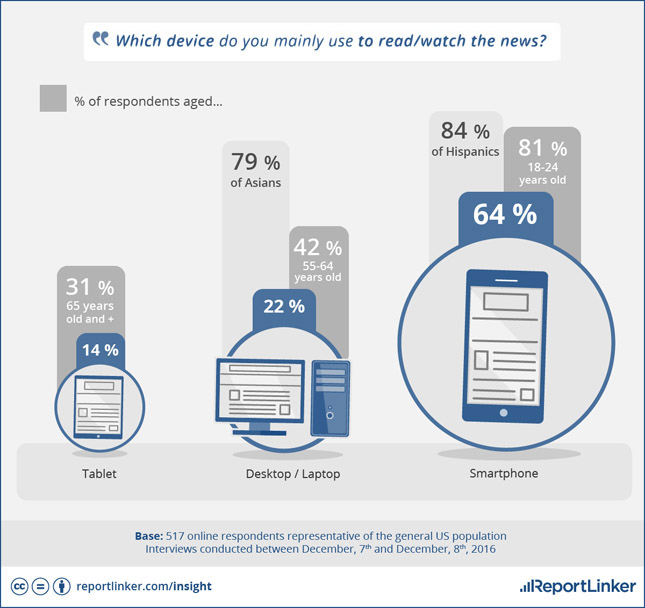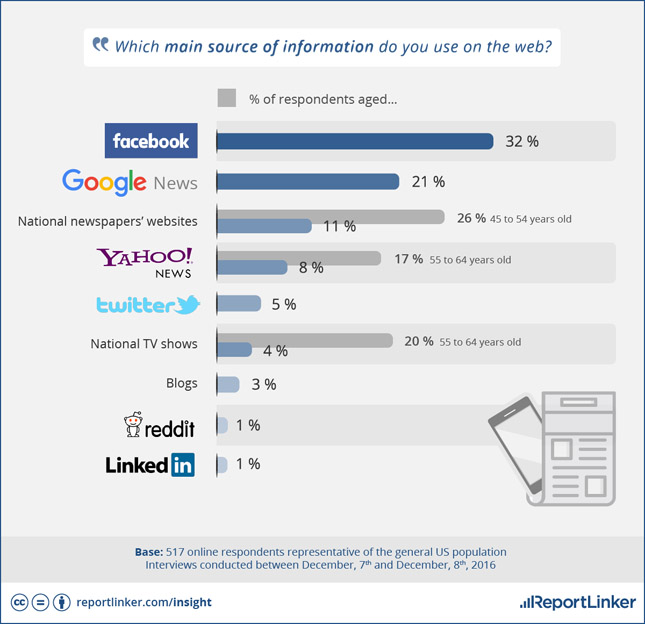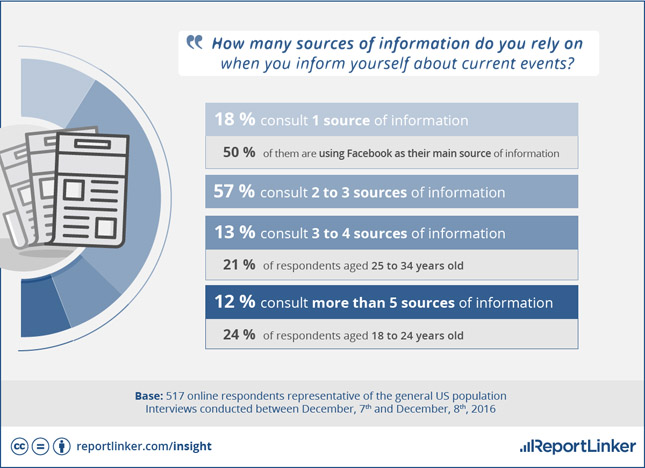In a year filled with political lies, fake news took the top “honor”. Fake news is defined by Politifact as “made-up stuff, masterfully manipulated to look like credible journalistic reports that are easily spread online to large audiences willing to believe the fictions and spread the word”.
Fake news has existed in some form for decades and their content creators made a small fortune from online advertising.
ReportLinker asked Americans about how they consume and evaluate their sources of information and the results were surprising.
News Sources Vary Widely
When asked how they keep up with current events, an equal number of Americans, 47%, cited television and the internet while 9% of Americans said they didn’t follow the news at all.
The most popular news source varied by age group: those 55 and older favor television 63% of the time while senior citizens cited newspapers more than any other group: slightly more than a quarter of seniors read newspapers compared to 18% of the rest of the population.
Unsurprisingly millennials rely on the internet 68% of the time and on their friends and family to get their information.
ReportLinker asked those who do read newspapers, which publication they read the most. Local sources were cited 65% of the time.
How often do Americans catch up on current events?
Eighty-eight percent find out what’s going on in the world at least once daily. Of those who check in twice, 60% watch TV. And the majority of those who check it more often do it online.
The majority of Americans access news using more than one source but 52% of those who check it less than once a day admitted they rely on relatives to keep them informed.
Technology and Its Effect on the News
Online news is a significant source and smartphones are the most-used technology for online news, especially by millennials.
Computers are the preferred device for 55 to 64-year-olds and well as Asians while tablets were favored by seniors.
Are social media websites news sources? The debate rages. Facebook has been accused of having the most fake news stories, something the network denies. The criticism stems from the fact Facebook customizes what news a user sees based on personal preference and an algorithm.
In a Washington Post experiment, the newspaper decided to test Facebook’s algorithm. It found that legitimate news was slow to trend while fake news, including news from a website with “fake news” in its domain, trended quickly.
Whether or not social media sites are legitimate, they are in the top nine online news sources. Facebook, Twitter and LinkedIn all were used as sources. Facebook is even the main source of online information for 32% of Americans.
Too Trusting?
Perhaps Americans are just too trusting. Fifty-eight percent said the websites they use are undoubtedly reliable.
A survey conducted by Ipsos and Buzzfeed News, found that American adults believe fake news 75% of the time, so ReportLinker asked how Americans validate articles. While a number of reasons were cited, techniques varied by age group. Seniors only believed news from established media sources, 45 to 54-years-olds went according to the details in the text and 25 to 34-year-olds considered the author’s field of expertise as well as the types of links in the article.
If fake news is to be combated, readers need to examine articles with a critical, less trusting eye.
Find a Home-Based Business to Start-Up >>> Hundreds of Business Listings.












































